|
Native American - Creational Myths
|
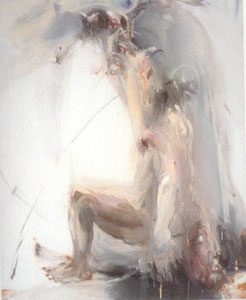 |
|
Creational Myths:
|
||||
|
|
||||
Iroquois
In the beginning there was no earth to live on, but up above, in the Great Blue, there was a woman who dreamed dreams.
One night she dreamed about a tree covered with white blossoms, a tree that brightened up the sky when its flowers opened but that brought terrible darkness when they closed again. The dream frightened her, so she went and told it to the wise old men who lived with her, in their village in the sky.
"Pull up this tree," she begged them, but they did not understand. All they did was to dig around its roots, to make space for more light. But the tree just fell through the hole they had made and disappeared. After that there was no light at all, only darkness.
The old men grew frightened of the woman and her dreams. It was her fault that the light had gone away forever.
So they dragged her toward the hole and pushed her through as well. Down, down she fell, down toward the great emptiness. There was nothing below her but a heaving waste of water and she would surely have been smashed to pieces, this strange dreaming woman from the Great Blue, had not a fish hawk come to her aid. His feathers made a pillow for her and she drifted gently above the waves.
But the fish hawk could not keep her up all on his own. He needed help. So he called out to the creatures of the deep. "We must find some firm ground for this poor woman to rest on," he said anxiously. But there was no ground, only the swirling, endless waters.
A helldiver went down, down, down to the very bottom of the sea and brought back a little bit of mud in his beak. He found a turtle, smeared the mud onto its back, and dived down again for more.
Then the ducks joined in. They loved getting muddy and they too brought beakfuls of the ocean floor and spread it over the turtle's shell. The beavers helped-- they were great builders-- and they worked away, making the shell bigger and bigger.
Everybody was very busy now and everybody was excited. This world they were making seemed to be growing enormous! The birds and the animals rushed about building countries, the continents, until, in the end, they had made the whole round earth, while all the time they sky woman was safely sitting on the turtle's back.
And the turtle holds the earth up to this very day.
Native American Myths and Legends
In the Land Above The Sky a
strong wind uprooted this tree. Skywoman, walking by, fell through the
hole left by the tree. As she fell a flock of geese broke her fall and
she landed on a giant turtle that rose from the waters. This giant
turtle grew in shape and size to form the land. There Skywoman gave
birth to a daughter whose children propagated the human race.
Huron
In the beginning there was only one water and the water animals that lived in it.
Then a woman fell from a torn place in the sky. She was a divine woman, full of power. Two loons flying over the water saw her falling. They flew under her, close together, making a pillow for her to sit on.
The loons held her up and cried for help. They could be heard for a long way as they called for other animals to come.
The snapping turtle called all the other animals to aid in saving the divine woman's life.
The animals decided the woman needed earth to live on.
Turtle said, "Dive down in the water and bring up some earth."
So they did that, those animals. A beaver went down. A muskrat went down. Others stayed down too long, and they died.
Each time, Turtle looked inside their mouths when they came up, but there was no earth to be found.
Toad went under the water. He stayed too long, and he nearly died. But when Turtle looked inside Toad's mouth, he found a little earth. The woman took it and put it all around on Turtle's shell. That was the start of the earth.
Dry land grew until it formed a country, then another country, and all the earth.. To this day, Turtle holds up the earth.
Time passed, and the divine woman had twin boys. They were opposites, her sons. One was good, and one was bad. One was born as children are usually born, in a normal way. But the other one broke out of his mother's side, and she died.
When the divine woman was buried, all of the plants needed for life on earth sprang from the ground above her. From her head came the pumpkin vine. Maize came from her chest. Pole beans grew from her legs.
The bad brother, Tawis-karong, made monstrous animals, fierce and terrifying. He made wolves and bears, snakes, and panthers of giant size. He made mosquitoes huge, the size of wild turkeys. And he made an enormous toad. It drank up the fresh water that was on the earth. All of it.
The good brother, Tijus-kaha, made proper animals that were of use to human beings. He made the dove, and the mockingbird, and the partridge. And one day, the partridge flew toward the land of Tawis-karong.
"I go because there is no water. And I hear there is some in your brother's land," said the partridge.
Tijus-kaha didn't believe the bird. So he followed, and finally he came to his evil brother's land. He saw all of the outlandish, giant animals his brother had made. Tijus-kaha didn't beat them down.
And then he saw the giant toad. He cut it open. Out came the earth's fresh water. Tijus-kaha didn't kill any [more] of his brother's creations.. But he made them smaller, of normal size so that human beings could be leaders over them.
His mother's spirit came to Tijus-kaha in a dream. She warned him about his evil brother. And sure enough, one day, the two brothers had to come face to face. They decided they could not share the earth. They would have a duel to see who would be master of the world.
Each had to overcome the other with a single weapon. Tijus-kaha, the good, could only be killing if beaten to death with a bag full of corn or beans. The evil brother could be killed only by using the horn of a deer or other wild animal. then the brothers fixed the fighting ground where the battle would begin.
The first turn went to the evil brother, Tawis-karong. He pounded his brother with a bag of beans. He beat him until Tijus-kaha was nearly dead. But not quite. He got his strength back, and he chased Tawis-karong. Now it was his turn.
He beat his evil brother with a deer horn. Finally, Tijus-kaha took his brother's life away. But still the evil brother wasn't completely destroyed. "I have gone to the far west," he said. "All the races of men will follow me to the west when they die."
It is the belief of the Hurons to this day. When they die, their spirits go to the far west, where they will dwell forever.
The Hurons are a confederacy of American Indians originally of the St.Lawrence Valley. This creation myth falls into the Earth-Diver category. In this type of myth, a being - sometimes divine, often an animal - dives into the water to bring up small amounts of soil. From this soil, the earth is formed.
In the BeginningCreation Stories from Around the Worldby Virginia Hamilton
Inuit
Time was, there were no people on earth. The first man still lay inside the pea pod.
Four days passed, and on the fifth day, he pushed with his feet. He broke through the bottom of the pod and fell to the ground. When he got up, he had become a grown man. He looked at everything and himself, his arms and legs, his hands; felt his neck. The pod that had held him still hung on the vine with a hole in its bottom.
The grown man walked a little away from the pod where he had started. The ground under him felt as if it were moving, too. It was not firm, but soft.
The way it moved under him made him feel sick. He stood still, and slowly a pool of water formed at his feet. He bent down and drank from the pool. It felt good the way the water went from his mouth down inside of him. It made him feel better.
He stood up again, refreshed. Next, he saw something. It was a dark thing flapping along, and it was coming. Then it was there before him. It stood looking at him.
"Who are you?" Raven asked, at last. "Where did you come from?"
"I came from the pea pod," said the man, pointing to the vine and the broken pod.
"I made that vine!" said Raven. "I never thought something like you would come from it. Here, this ground we're standing on is soft. I made it later than the rest. Let's go to the high ground. It's hard and thick."Man and Raven went to the high ground, and it was quite hard under them.
"Did you have anything to eat?" Raven asked.
Man told him about the wet stuff that had pooled at his feet.
"Ah, you must have drunk water," Raven said. "Wait here for me."
He drew the beak-mask down and changed once more into a bird. Raven flew up into the sky and disappeared.
Four days later, he returned. The whole time, Man had been waiting.
Raven pushed up his beak and was again a man. He had four berries-- two raspberries and two heathberries.
"I made these for you," he said. "I want them to grow all over the earth. Here, eat them."
Man put the berries in his mouth and ate them.
"I feel better," he said.
Next, Raven took Man to a small creek. There, the man-bird found two pieces of clay and molded them into tiny mountain sheep. He held them on his palm. When they dried, he let Man take a close look at them.
"They look nice," Man said.
"Now shut your eyes," Raven told him. Man did close his eyes.
Raven pulled down his beak and made his wings wave back and forth, back and forth over the clay figures. They came to life and bounded away as grown mountain sheep. Raven lifted his mask.
"Look!" he said.
Man saw the sheep moving very fast. They were full of life, and that pleased him. He thought people would like them. For there were more men growing on the vine.
But when Raven saw the way Man was looking at the mountain sheep with such delight, he put them up high so that people would not kill too many of them.
Raven made more animals, moved his wings, and brought them to life. Every animal and bird and fish that Raven made, Man viewed with pleasure. That worried Raven. He thought he'd better create something Man would fear, or else Man might eat or kill everything that moved.
So Raven went to another creek. He took some clay and created a bear, making it come alive. Quickly, Raven got out of the way of Bear because the animal was so fierce it would tear him apart and maybe eat him.
"You will get lonely if you stay by yourself," Raven said to Man. "So I will make somebody for you."
Raven went off a ways, where he could view Man but where Man couldn't be sure what he was doing. There, off a ways, he made a figure out of clay much like Man's, although different. He fastened watercress on the back of its head for hair. When the figure had dried in the palm of his hand, he waved his wings several times. It came to life. It was a lovely woman. She got up, grew up, and stood beside Man.
"That is your helper and your mate," said Raven.
"She is very pretty," said Man, and he was happy.
Raven went on doing what he needed to do. And Man and Woman had a child. Soon, there were many, many people and animals. All that was living grew and thrived.The world prospered.
This is a wonderful,
dramatic Eskimo myth, parts of which are widely known, spread from
Siberia to Greenland. The myth speaks of society rather than the
universe. Raven is a trickster god who travels from heaven to earth and
sometimes, in some stories, to the seafloor. He has sacred power and can
change form. Raven instructs people in living. He creates first-man
through the pea vine and other people and animals from clay taken from
the earth-creek.
In the Beginning
Creation Stories from Around
the World
by Virginia Hamilton
Cherokee - The Daughter of the Sun
The Uktena is the great serpent of Cherokee tales who lives in the mountains. It has rings or spots of color along its body, is horned, is as large around as a tree trunk, and had once a bright, blazing jewel embedded in its forehead called the Ulunsuti. The Ulunsuti is a rutile quartz which, down one side, has a bright streak of red, making it a very rare specimen of quartz besides being sacred in connection to the Uktena. The Great Serpent lost the jewel at one point and the Cheokee people kept it in their possession.
The Uktena had the power to destroy all that Man held most dear and was so venomous that if he ever looked at someone, that person's whole family would perish. Even to look at it while it was sleeping. He isn't a patron of the Cherokee, but rather, is an enemy to be overcome. The Uktena could only be wounded in the seventh spot from his head because that is where the Uktena's heart was. He is normally slain by a hero in tales.
The reason that the Uktena is a creature of such threat is because he was very jealous and bitter towards Snake. Snake was honored and prayed to, (while the Uktena was not), because Snake had struck the Sun's daughter one day while she was opening the doors to the house for the Sun to come in. The Sun was angry and pained that the people liked Moon more. The people could gaze at Moon easily and did so often, complimenting him on his greatness, but when they looked up at Sun they would squint, make faces, and complain. Sun would have continued to burn the people to death as she had already done to hundreds for punishment. Without Her daughter to let Her come in, however, the people were saved.
The Sun lived on the other side of the sky vault, but her daughter lived in the middle of the sky, directly above the Earth. Every day as the sun was climbing along the sky arch to the west, she used to stop at her daughters house for dinner. Now, the Sun hated the people of this Earth, because they never looked straight at her without squinting. She said to her brother, the Moon, "My grandchildren are ugly, they screw up their faces whenever they see me.
But the Moon said, "I like my younger brothers, I think they are handsome."
This was because they always smiled pleasantly at his mild glow in the night sky.
The Sun was jealous of the Moon's popularity and decided to kill the people. Every day when she got near her daughter's house, she sent down such sultry heat that fever broke out and people died by the hundreds. When everyone had lost some friend ands it seemed as if no one would be spared, the humans went for help to the little men. These men, who were friendly spirits, said that the only way the people could save themselves was to kill Sun. The Little Men made medicine to change two of the humans into snakes, the spreading adder and copperhead, who could hide near the daughter's door and bite the old Sun. The Snakes went up to the sky and lay in wait until the sun arrived for dinner. But when the spreading adder was about to spring, her bright light blinded him and he could only spit out yellow slime, as he does to this day when he tries to bite. The Sun called him a nasty thing and went into the house, and the copperhead was so discouraged that he crawled off without trying to do anything.
Forgetting to wait for the old Sun, he went back to the people, and Uktena was so angry at the rattlesnake's stupidity that he went back too. Since then we pray to the rattlesnake and don't kill him, because he wishes people well and never tries to bite if we don't disturb him.
When the Sun found her daughter dead, she shut herself up in the house and grieved. Now the people were no longer dying from the heat, but they lived in darkness. Once more they sought help from the Little Men, who said that in order to coax the Sun out, they must bring her daughter back from Tsusgina'i. This is the ghost country, which lies in Usunhi'yi, the Darkening Land in the west. The people chose seven men to make the journey. The Little Men told the seven to take a box, and told each man to carry sourwood rod a handbreadth long. When they got to Tsugina'i, the Little Men explained, they would find all the ghost at a dance. They should stand outside the circle, and when the Sun's daughter danced past them, they must strike her with the rods and she would fall to the ground. Then they could put her in the box and bring her back to her mother. But they must not open the box, not even a crack, until they arrived home.
The seven men took the rods and the box and traveled west for seven days until they came to the Darkening Land. There they found a great crowd of ghost having a dance, just as if they were alive. The Sun's daughter was in the outside circle. As she danced past them, one of the seven men struck her with his rod, and then another and another, until at the seventh round she fell out of the ring. The men put her into the box and closed the lid, and the other ghost never seem to notice what had happened.
The seven took up the box and started home toward the east. In a while the girl came to life again and begged to be let out, but the party went on without answering. Soon she called again and said she was hungry, but they did not reply. When at last the group was very near home, the daughter of the sun cried that she was smothering and begged them to raise the lid just a little. Now they were afraid that she was really dying, so they barely cracked the lid to give her air. There was a fluttering sound, and something flew past them into the bushes. Then they heard a redbird cry, "Kwish!Kwish!Kwish!" Shutting the lid, they went on again. But when they arrived at the settlements and opened the box, it was empty.
So we know that the redbird is the daughter of the Sun. And if the party had kept the box closed, as the Little Men told them to, they could have brought her home safely, and today we would be able to recover our friends from the Ghost Country. Because the seven opened the box, however, we can never bring back people who die.
The Sun had been hopeful when the party had started off for the Darkening Land, but when they came back without her daughter, she wept until her tears caused a great flood. Fearing that the world would be drowned, the people held another council and decided to send their handsomest young men and women to amuse the Sun and stop her crying. This group danced before her and sang their best songs, but for a long time she kept her face bowed and paid no attention. At last when the drummer suddenly changed the song, she looked up and was so pleased at the sight of the beautiful young people that she forgot her grief and smiled.
Apache
In the beginning there was only darkness. Suddenly a small bearded man, the One Who Lives Above, appeared rubbing his eyes as if just awakened. The man, the Creator, rubbed his hands together and there appeared a little girl, Girl-Without-Parents. The creator rubbed his face with his hands and there stood the Sun-God. Again Creator rubbed his sweaty brow and from his hands dropped Small-boy. Now there were four gods. Then he created Tarantula, Big Dipper, Wind, Lightning-Maker and Lightning-Rumbler. All four gods shook hands so that their sweat mixed together. Then Creator rubbed his palms together from which fell a small round, brown ball. They took turns kicking it and with each kick the ball grew larger. Creator told Wind to go inside the ball and blow it up. Then Tarantula spun a black cord which he attached to the ball and went to the east pulling as hard as he could.
He repeated this exercise with a blue cord to the south, a yellow cord to the west and a white cord to the north. When he was done the brown ball had become the earth. The Creator again rubbed his hands and there appeared Hummingbird. "Fly all over this earth," said Creator to Hummingbird, "and tell us what you see." When he returned Hummingbird reported that there was water on the west side. But the earth rolled and bounced, so Creator made four giant posts one each black, blue, yellow and white and had Wind place them at the four cardinal points of the earth. The earth was now still. The creation of the people, animals, birds, trees, etc takes place hereafter.
Myth 2
Animals, elements, the solar system, and natural phenomena are revered by the Apaches. That which is beyond their understanding is always ascribed to the supernatural.
In the beginning nothing existed--no earth, no sky, no sun, no moon, only darkness was everywhere.
Suddenly from the darkness emerged a thin disc, one side yellow and the other side white, appearing suspended in midair. Within the disc sat a small bearded man, Creator, the One Who Lives Above. As if waking from a long nap, he rubbed his eyes and face with both hands.
When he looked into the endless darkness, light appeared above. He looked down and it became a sea of light. To the east, he created yellow streaks of dawn. To the west, tints of many colors appeared everywhere. There were also clouds of different colors.
Creator wiped his sweating face and rubbed his hands together, thrusting them downward. Behold! A shining cloud upon which sat a little girl.
"Stand up and tell me where are you going," said Creator. But she did not reply. He rubbed his eyes again and offered his right hand to the Girl-Without-Parents.
"Where did you come from?" she asked, grasping his hand.
"From the east where it is now light," he replied, stepping upon her cloud.
"Where is the earth?" she asked.
"Where is the sky?" he asked, and sang, "I am thinking, thinking, thinking what I shall create next." He sang four times, which was the magic number.
Creator brushed his face with his hands, rubbed them together, then flung them wide open! Before them stood Sun-God. Again Creator rubbed his sweaty brow and from his hands dropped Small- Boy.
All four gods sat in deep thought upon the small cloud.
"What shall we make next?" asked Creator. "This cloud is much too small for us to live upon."
Then he created Tarantula, Big Dipper, Wind, Lightning-Maker, and some western clouds in which to house Lightning-Rumbler, which he just finished.
Creator sang, "Let us make earth. I am thinking of the earth, earth, earth; I am thinking of the earth," he sang four times.
All four gods shook hands. In doing so, their sweat mixed together and Creator rubbed his palms, from which fell a small round, brown ball, not much larger than a bean.
Creator kicked it, and it expanded. Girl-Without-Parents kicked the ball, and it enlarged more. Sun-God and Small-Boy took turns giving it hard kicks, and each time the ball expanded. Creator told Wind to go inside the ball and to blow it up.
Tarantula spun a black cord and, attaching it to the ball, crawled away fast to the east, pulling on the cord with all his strength. Tarantula repeated with a blue cord to the south, a yellow cord to the west, and a white cord to the north. With mighty pulls in each direction, the brown ball stretched to immeasurable size--it became the earth! No hills, mountains, or rivers were visible; only smooth, treeless, brown plains appeared.
Creator scratched his chest and rubbed his fingers together and there appeared Hummingbird.
"Fly north, south, east, and west and tell us what you see," said Creator.
"All is well," reported Hummingbird upon his return. "The earth is most beautiful, with water on the west side."
But the earth kept rolling and dancing up and down. So Creator made four giant posts--black, blue, yellow, and white to support the earth. Wind carried the four posts, placing them beneath the four cardinal points of the earth. The earth sat still.
Creator sang, "World is now made and now sits still," which he repeated four times.
Then he began a song about the sky. None existed, but he thought there should be one. After singing about it four times, twenty- eight people appeared to help make a sky above the earth. Creator chanted about making chiefs for the earth and sky.
He sent Lightning-Maker to encircle the world, and he returned with three uncouth creatures, two girls and a boy found in a turquoise shell. They had no eyes, ears, hair, mouths, noses, or teeth. They had arms and legs, but no fingers or toes.
Sun-God sent for Fly to come and build a sweathouse. Girl- Without-Parents covered it with four heavy clouds. In front of the east doorway she placed a soft, red cloud for a foot-blanket to be used after the sweat.
Four stones were heated by the fire inside the sweathouse. The three uncouth creatures were placed inside. The others sang songs of healing on the outside, until it was time for the sweat to be finished. Out came the three strangers who stood upon the magic red cloud-blanket. Creator then shook his hands toward them, giving each one fingers, toes, mouths, eyes, ears, noses and hair.
Creator named the boy, Sky-Boy, to be chief of the Sky-People. One girl he named Earth-Daughter, to take charge of the earth and its crops. The other girl he named Pollen-Girl, and gave her charge of health care for all Earth-People.
Since the earth was flat and barren, Creator thought it fun to create animals, birds, trees, and a hill. He sent Pigeon to see how the world looked. Four days later, he returned and reported, "All is beautiful around the world. But four days from now, the water on the other side of the earth will rise and cause a mighty flood."
Creator made a very tall pinon tree. Girl-Without-Parents covered the tree framework with pinon gum, creating a large, tight ball.
In four days, the flood occurred. Creator went up on a cloud, taking his twenty-eight helpers with him. Girl-Without-Parents put the others into the large, hollow ball, closing it tight at the top.
In twelve days, the water receded, leaving the float-ball high on a hilltop. The rushing floodwater changed the plains into mountains, hills, valleys, and rivers. Girl-Without-Parents led the gods out from the float-ball onto the new earth. She took them upon her cloud, drifting upward until they met Creator with his helpers, who had completed their work making the sky during the flood time on earth.
Together the two clouds descended to a valley below. There, Girl-Without-Parents gathered everyone together to listen to Creator.
"I am planning to leave you," he said. "I wish each of you to do your best toward making a perfect, happy world.
"You, Lightning-Rumbler, shall have charge of clouds and water.
"You, Sky-Boy, look after all Sky-People.
"You, Earth-Daughter, take charge of all crops and Earth-People.
"You, Pollen-Girl, care for their health and guide them.
"You, Girl-Without-Parents, I leave you in charge over all."
Creator then turned toward Girl-Without-Parents and together they rubbed their legs with their hands and quickly cast them forcefully downward. Immediately between them arose a great pile of wood, over which Creator waved a hand, creating fire.
Great billowy clouds of smoke at once drifted skyward. Into this cloud, Creator disappeared. The other gods followed him in other clouds of smoke, leaving the twenty-eight workers to people the earth.
Sun-God went east to live and travel with the Sun. Girl-Without- Parents departed westward to live on the far horizon. Small-Boy and Pollen-Girl made cloud homes in the south. Big Dipper can still be seen in the northern sky at night, a reliable guide to all.
Cherokee
Myth 2
Long ago, before there were any people, the world was young and water covered everything. The earth was a great island floating above the seas, suspended by four rawhide ropes representing the four sacred directions. It hung down from the crystal sky. There were no people, but the animals lived in a home above the rainbow. Needing space, they sent Water Beetle to search for room under the seas. Water Beetle dove deep and brought up mud that spread quickly, turning into land that was flat and too soft and wet for the animals to live on.
The plants were placed upon the earth. The Creator told the plants and animals to stay awake for seven days and seven nights. Only a few animals managed to do so, including the owls and mountain lions, and they were rewarded with the power to see in the dark. Among the plants, only the cedars, spruces, and pines remained awake. The Creator told these plants that they would keep their hair during the winter, while the other plants would lose theirs.
People were created last. The women were able to have babies every seven days. They reproduced so quickly that the Creator feared the world would soon become too crowded. So after that the women could have only one child per year, and it has been that way ever since.
Navajo
The people traveled through four worlds before climbing a reed growing from the bottom of the Lake of Changing Waters to this present world. First Man and First Woman with their two first children, Changing Twins, were in the forefront.First Man and First Woman produced a mountain. They populated it with plants and animals. On the peak they placed a black bowl with two blackbird eggs in it.They fastened down the peak with a rainbow. One twin took some clay from riverbed and it fashioned itself into a bowl. The other twin found reeds growing and shaped them into a water basket.They picked up stones from the ground which became axes, knives, spear points and hammers in their hands.
The Navajo creation story involves three underworlds where important events happened to shape the Fourth World where we now live.
The Navajo were given the name Ni’hookaa Diyan DinE by their creators. It means 'Holy Earth People' or 'Lords of the Earth'. Navajos today simply call themselves "DinE", meaning "The People". The Tewa Indians were the first to call them "Navahu", which means "the large area of cultivated land". The Mexicans knew them as 'Apaches Du Nabahu' (Apaches of the Cultivated Fields), where 'Apache' (Enemy) was picked up from the Zuni Indian language. The "Apaches Du Nabahu" were known as a special group somewhat distinct from the rest of the Apaches. Alonso de Benavides changed the name to "Navaho" in a book written in 1630. The name the Dinι officially use for themselves is "Navajo".
According to the DinE, they emerged from three previous underworlds into this, the fourth, or "Glittering World", through a magic reed. The first people from the other three worlds were not like the people of today. They were animals, insects or masked spirits as depicted in Navajo ceremonies. First Man ('Altsι Hastiin), and First Woman ('Altsι 'Asdzαα), were two of the beings from the First or Black World. First Man was made in the east from the meeting of the white and black clouds. First Woman was made in the west from the joining of the yellow and blue clouds. Spider Woman (Na ashje’ii 'Asdzαα), who taught Navajo women how to weave, was also from the first world.
Once in the Glittering World, the first thing the people did was build a sweat house and sing the Blessing Song. Then they met in the first house (hogan) made exactly as Talking God (Haashch’eelti’i) had prescribed. In this hogan, the people began to arrange their world, naming the four sacred mountains surrounding the land and designating the four sacred stones that would become the boundaries of their homeland. In actuality, these mountains do not contain the symbolic sacred stones.
The San Francisco Peaks (Dook’o’oslννd), represents the Abalone and Coral stones. It is located just north of Flagstaff, and is the Navajo’s religious western boundary. Mt. Blanco (Tsisnaasjini'), in Colorado, represents the White Shell stone, and represents the Navajo’s religious eastern boundary. Mt. Taylor (Tsoodzil) east of Grants, New Mexico, represents the Turquoise stone, and represents the Navajo’s religious southern boundary. Mt. Hesperus (DibE Nitsaa), in Colorado, represents the Black Jet stone, and represents the Navajo’s religious northern boundary.
After setting the mountains down where they should go, the Navajo deities, or "Holy People", put the sun and the moon into the sky and were in the process of carefully placing the stars in an orderly way. But the Coyote, known as the trickster, grew impatient from the long deliberations being held, and seized the corner of the blanket where it lay and flung the remaining stars into the sky.
Changing Woman grew up around El Huerfano Mesa (Dzil Na’oodilii), in northern New Mexico. She married the Sun and bore two son, twins, and heroes to the Navajo people. They were known as "Monster Slayer" and "Child-Born-of-Water". The twins traveled to their father the Sun who gave them weapons of lighting bolts to fight the dreaded monsters. Every place the Hero Twins killed a monster it turned to stone.
With all of the monsters dead, the Navajo deities, or 'Holy People', turned their attention to the making of the four original clans. Kiiyaa aanii, or Tall House People, was the first clan. They were made of yellow and white corn. Eventually other clans traveled to the area round the San Juan River, bring their important contributions to the tribe. Some were Paiutes who brought their beautiful baskets. Others were Pueblos who shared their farming and weaving skills. Still others were Utes and Apaches.
For her husband, the 'Sun', to visit her every evening, Changing Woman went to live in the western sea on an island made of rock crystal. Her home was made of the four sacred stones: Abalone, White Shell, Turquoise, and Black Jet. During the day she became lonely and decided to make her own people. She made four clans from the flakes of her skin. These were known as the,
Changing Woman gave her permission for them to travel from the western sea to the San Francisco Peaks. They then traveled through the Hopi mesas where they left porcupine, still commonly found there today. Then they traveled toward the Chuska Mountains and on to Mt. Taylor. Finally, the people arrived at Dinetah, the DinE traditional homeland, and joined the other clans already living there. Dinetah is located in the many canyons that drain the San Juan River about 30 miles east of Farmington, New Mexico.
Iroquois
About 1390, today's State of New York became the stronghold of five powerful Indian tribes. They were later joined by another great tribe, the Tuscaroras from the south. Eventually the Iroquois, Mohawks, Oneidas, Onondagas, and Cayugas joined together to form the great Iroquois Nation. In 1715, the Tuscaroras were accepted into the Iroquois Nation.
Long, long ago, one of the Spirits of the Sky World came down and looked at the earth. As he traveled over it, he found it beautiful, and so he created people to live on it. Before returning to the sky, he gave them names, called the people all together, and spoke his parting words:
"To the Mohawks, I give corn," he said. "To the patient Oneidas, I give the nuts and the fruit of many trees. To the industrious Senecas, I give beans. To the friendly Cayugas, I give the roots of plants to be eaten. To the wise and eloquent Onondagas, I give grapes and squashes to eat and tobacco to smoke at the camp fires."
Many other things he told
the new people. Then he wrapped himself in a bright cloud and
went like
a swift arrow to the Sun. There his return caused his Brother Sky
Spirits to rejoice.
Lakota
Kangi pleaded with the Creating Power to make him a new place to rest. So the Creating Power decided the time had come to make his new world. From his huge pipe bag, which contained all types of animals and birds, the Creating Power selected four animals known for their ability to remain under water for a long time.He sent each in turn to retrieve a lump of mud from beneath the floodwaters. First the loon dove deep into the dark waters, but it was unable to reach the bottom. The otter, even with its strong webbed feet, also failed. Next, the beaver used its large flat tail to propel itself deep under the water, but it too brought nothing back. Finally, the Creating Power took the turtle from his pipe bag and urged it to bring back some mud.
Turtle stayed under the water for so long that everyone was sure it had drowned. Then, with a splash, the turtle broke the water's surface! Mud filled its feet and claws and the cracks between its upper and lower shells. Singing, the Creating Power shaped the mud in his hands and spread it on the water, where it was just big enough for himself and the crow. He then shook two long eagle wing feathers over the mud until earth spread wide and varied, overcoming the waters. Feeling sadness for the dry land, the Creating Power cried tears that became oceans, streams, and lakes. He named the new land Turtle Continent in honor of the turtle who provided the mud from which it was formed.
The Creating Power then took many animals and birds from his great pipe bag and spread them across the Earth. From red, white, black, and yellow earth, he made men and women. The Creating Power gave the people his sacred pipe and told them to live by it. He warned them about the fate of the people who came before them. He promised all would be well if all living things learned to live in harmony. But the world would be destroyed again if they made it bad and ugly.
Lakota Star Knowledge
Chelan
Long, long ago, the Creator, the Great Chief Above, made the world. Then he made the animals and the birds and gave them their names -- Coyote, Grizzly Bear, Deer, Fox, Eagle, the four Wolf Brothers, Magpie, Bluejay, Hummingbird, and all the others. When he had finished his work, the Creator called the animal people to him. "I am going to leave you," he said. "But I will come back. When I come again, I will make human beings. They will be in charge of you."
The Great Chief returned to his home in the sky, and the animal people scattered to all parts of the world.
After twelve moons, the animal people gathered to meet the Creator as he had directed. Some of them had complaints. Bluejay, Meadowlark, and Coyote did not like their names. Each of them asked to be some other creature. "No," said the Creator. "I have given you your names. There is no change. My word is law.
"Because you have tried to change my law, I will not make the human being this time. Because you have disobeyed me, you have soiled what I brought with me. I planned to change it into a human being. Instead, I will put it in water to be washed for many moons and many snows, until it is clean again."
Then he took something from his right side and put it in the river. It swam, and the Creator named it Beaver. "Now I will give you another law," said the Great Chief Above.
"The one of you who keeps strong and good will take Beaver from the water some day and make it into a human being. I will tell you now what to do. Divide Beaver into twelve parts. Take each part to a different place and breathe into it your own breath. Wake it up. It will be a human being with your breath. Give it half of your power and tell it what to do. Today I am giving my power to one of you. He will have it as long as he is good." When the Creator had finished speaking, all the creatures started for their homes -- all except Coyote. The Great Chief had a special word for Coyote.
"You are to be head of all the creatures, Coyote. You are a power just like me now, and I will help you do your work. Soon the creatures and all the other things I have made will become bad. They will fight and will eat each other. It is your duty to keep them as peaceful as you can. "When you have finished your work, we will meet again, in this land toward the east. If you have been good, if you tell the truth and obey me, you can make the human being from Beaver. If you have done wrong, someone else will make him." Then the Creator went away.
It happened as the Creator had foretold. Everywhere the things he had created did wrong. The mountains swallowed the creatures. The winds blew them away. Coyote stopped the mountains, stopped the winds, and rescued the creatures. One winter, after North Wind had killed many people, Coyote made a law for him: "Hereafter you can kill only those who make fun of you."
Everywhere Coyote went, he made the world better for the animal people and better for the human beings yet to be created. When he had finished his work, he knew that it was time to meet the Creator again. Coyote thought that he had been good, that he would be the one to make the first human being. But he was mistaken. He thought that he had as much power as the Creator. So he tried, a second time, to change the laws of the Great Chief Above.
"Some other creature will make the human being," the Creator told Coyote. "I shall take you out into the ocean and give you a place to stay for all time." So Coyote walked far out across the water to an island. There the Creator stood waiting for him, beside the house he had made. Inside the house on the west side stood a black suit of clothes. On the other side hung a white suit. "Coyote, you are to wear this black suit for six months," said the Creator. "Then the weather will be cold and dreary. Take off the black suit and wear the white suit. Then there will be summer, and everything will grow. I will give you my power not to grow old. You will live here forever and forever."
Coyote stayed there, out in the ocean, and the four Wolf brothers took his place as the head of all the animal people. Youngest Wolf Brother was strong and good and clever. Oldest Wolf Brother was worthless. So the Creator gave Youngest Brother the power to take Beaver from the water. One morning Oldest Wolf Brother said to Youngest Brother, "I want you to kill Beaver. I want his tooth for a knife."
"Oh, no!" exclaimed Second and Third Brothers. "Beaver is too strong for Youngest Brother." But Youngest Wolf said to his brothers, "Make four spears. For Oldest Brother, make a spear with four forks. For me, make a spear with one fork. Make a two-forked spear and a three-forked spear for yourselves. I will try my best to get Beaver, so that we can kill him."
All the animal persons had seen Beaver and his home. They knew where he lived. They knew what a big creature he was. His family of young beavers lived with him. The animal persons were afraid that Youngest Wolf Brother would fail to capture Beaver and would fail to make the human being. Second and Third Wolf Brothers also were afraid. "I fear we will lose Youngest Brother," they said to each other. But they made the four spears he had asked for.
At dusk, the Wolf brothers tore down the dam at the beavers' home, and all the little beavers ran out. About midnight, the larger beavers ran out. They were so many, and they made so much noise, that they sounded like thunder. Then Big Beaver ran out, the one the Creator had put into the water to become clean.
"Let's quit!" said Oldest Wolf Brother, for he was afraid. "Let's not try to kill him."
"No!" said Youngest Brother. "I will not stop."
Oldest Wolf Brother fell down. Third Brother fell down. Second Brother fell down. Lightning flashed. The beavers still sounded like thunder. Youngest Brother took the four-forked spear and tried to strike Big Beaver with it. It broke. He used the three-forked spear. It broke. He used the two-forked spear. It broke. Then he took his own one-forked spear. It did not break. It pierced the skin of Big Beaver and stayed there. Out of the lake, down the creek, and down Big River, Beaver swam, dragging Youngest Brother after it.
Youngest Wolf called to his brothers, "You stay here. If I do not return with Beaver in three days, you will know that I am dead." Three days later, all the animal persons gathered on a level place at the foot of the mountain. Soon they saw Youngest Brother coming. He had killed Beaver and was carrying it. "You remember that the Creator told us to cut it into twelve pieces," said Youngest Brother to the animal people. But he could divide it into only eleven pieces.
Then he gave directions. "Fox, you are a good runner. Hummingbird and Horsefly, you can fly fast. Take this piece of Beaver flesh over to that place and wake it up. Give it your breath." Youngest Brother gave other pieces to other animal people and told them where to go. They took the liver to Clearwater River, and it became the Nez Perce Indians. They took the heart across the mountains, and it became the Methow Indians. Other parts became the Spokane people, the Lake people, the Flathead people. Each of the eleven pieces became a different tribe.
"There have to be twelve tribes," said Youngest Brother. "Maybe the Creator thinks that we should use the blood for the last one. Take the blood across the Shining Mountains and wake it up over there. It will become the Blackfeet. They will always look for blood."
When an animal person woke the piece of Beaver flesh and breathed into it, he told the new human being what to do and what to eat. "Here are roots," and the animal people pointed to camas and kouse and to bitterroot, "You will dig them, cook them, and save them to eat in the winter.
"Here are the berries that will ripen in the summer. You will eat them and you will dry them for use in winter." The animal people pointed to chokecherry trees, to serviceberry bushes, and to huckleberry bushes.
"There are salmon in all the rivers. You will cook them and eat them when they come up the streams. And you will dry them to eat in the winter."
When all the tribes had been created, the animal people said to them "Some of you new people should go up Lake Chelan. Go up to the middle of the lake and look at the cliff beside the water. There you will see pictures on the rock. From the pictures you will learn how to make the things you will need."
The Creator had painted the pictures there, with red paint. From the beginning until long after the white people came, the Indians went to Lake Chelan and looked at the paintings. They saw pictures of bows and arrows and of salmon traps. From the paintings of the Creator they knew how to make the things they needed for getting their food.
Comanche
"One day the Great Spirit collected swirls of dust from the four directions in order to create the Commanche people. These people formed from the earth had the strength of mighty storms. Unfortunately, a shape-shifting demon was also created and began to torment the people. The Great Spirit cast the demon into a bottomless pit. To seek revenge the demon took refuge in the fangs and stingers of poisonous creatures and continues to harm people every chance it gets."
Chinook
Talapas (Creator) gave life to the surface of the Earth. It grew in abundance. Later, he placed the animal forms of all the Totem Spirits on the surface of the Earth Mother, and they prospered. Talapas then instructed T'soona (Thunderbird) to carry these special eggs from the other place, and place them on the top of Kaheese, a mountain near the Yakaitl-Wimakl (Columbia River).
T'soona did so.
The Old Giantess, not wanting these special eggs to hatch, began to break the eggs. The vengeful Spirit Bird swiftly swooped down from Otelagh (the sun) and pursued the Old Giantess, and consumed her with fire, in revenge for her injustice.
Soon the remaining eggs became the T'sinuk (Chinook).
Seminole Indians
They traveled to the East, walking for about a month. Finally, they arrived at land's end. They tossed their baggage over the end and they, too, disappeared beyond earth's edge.
Down, down, down the Indians dropped for a while, before starting upward again toward the sky. For a long time they traveled westward. At last, they came to a lodge where lived an old, old woman.
"Tell me, for whom are you looking?" she asked feebly.
"It is not possible to see him now," she said. "You must stay here for a while first."
That night the five Seminole Indian men strolled a little distance from the old woman's lodge, where they encountered a group of angels robed in white and wearing wings. They were playing a ball game the men recognized as one played by the Seminoles.
Two of the men decided they would like to remain and become angels. The other three preferred to return to earth. Then to their surprise, the Great Spirit appeared and said, "So be it!"
A large cooking pot was placed on the fire. When the water was boiling, the two Seminoles who wished to stay were cooked! When only their bones were left, the Great Spirit removed them from the pot, and put their bones back together again. He then draped them with a white cloth and touched them with his magic wand. The Great Spirit brought the two Seminole men back to life! They wore beautiful white wings and were called men-angels.
"What do you three men wish to do?" asked the Great Spirit.
"If we may, we prefer to return to our Seminole camp on earth," replied the three Seminoles.
"Gather your baggage together and go to sleep at once," directed the Great Spirit.
Later, when the three Seminole men opened their eyes, they found themselves safe at home again in their own Indian camp.
"We are happy to return and stay earthbound. We hope never to venture skyward again in search of other mysteries," they reported to the Chief of the Seminoles.
Chippewa
The Great Serpent and the Flood
From Maine and Nova Scotia to the Rocky Mountains, Indians told stories about the Great Serpent. More than a century ago the serpent was considered to be "a genuine spirit of evil." Some version of the story of the Great Flood of long ago, as recounted here, is told around the world.
Nanabozho (Nuna-bozo, accented on bozo) was the hero of many stories told by the Chippewa Indians. At one time they lived on the shores of Lake Superior, in what are now the states of Minnesota and Wisconsin and the province of Ontario.
One day when Nanabozho returned to his lodge after a long journey, he missed his young cousin who lived with him. He called the cousin's name but heard no answer. Looking around on the sand for tracks, Nanabozho was startled by the trail of the Great Serpent. He then knew that his cousin had been seized by his enemy.
Nanabozho picked up his bow and arrows and followed the track of the serpent. He passed the great river, climbed mountains, and crossed over valleys until he came to the shores of a deep and gloomy lake. It is now called Manitou Lake, Spirit Lake, and also the Lake of Devils. The trail of the Great Serpent led to the edge of the water.
Nanabozho could see, at the bottom of the lake, the house of the Great Serpent. It was filled with evil spirits, who were his servants and his companions. Their forms were monstrous and terrible. Most of them, like their master, resembled spirits. In the centre of this horrible group was the Great Serpent himself, coiling his terrifying length around the cousin of Nanabozho.
The head of the Serpent was red as blood. His fierce eyes glowed like fire. His entire body was armed with hard and glistening scales of every color and shade.
Looking down on these twisting spirits of evil, Nanabozho made up his mind that he would get revenge on them for the death of his cousin.
He said to the clouds, "Disappear!"
And the clouds went out of sight.
"Winds, be still at once!" And the winds became still.
When the air over the lake of evil spirits had become stagnant, Nanabozho said to the sun, "Shine over the lake with all the fierceness you can. Make the water boil."
In these ways, thought Nanabozho, he would force the Great Serpent to seek the cool shade of the trees growing on the shores of the lake. There he would seize the enemy and get revenge.
After giving his orders, Nanabozho took his bow and arrows and placed himself near the spot where he thought the serpents would come to enjoy the shade. Then he changed himself into the broken stump of a withered tree.
The winds became still, the air stagnant, and the sun shot hot rays from a cloudless sky. In time, the water of the lake became troubled, and bubbles rose to the surface. The rays of the sun had penetrated to the home of the serpents. As the water bubbled and foamed, a serpent lifted his head above the centre of the lake and gazed around the shores. Soon another serpent came to the surface. Both listened for the footsteps of Nanabozho, but they heard him nowhere.
"Nanabozho is sleeping," they said to one another.
And then they plunged beneath the waters, which seemed to hiss as they closed over the evil spirits.
Not long after, the lake became more troubled. Its water boiled from its very depths, and the hot waves dashed wildly against the rocks on its banks. Soon the Great Serpent came slowly to the surface of the water and moved toward the shore. His blood-red crest glowed. The reflection from his scales was blinding--as blinding as the glitter of a sleet-covered forest beneath the winter sun. He was followed by all the evil spirits. So great was their number that they soon covered the shores of the lake.
When they saw the broken stump of the withered tree, they suspected that it might be one of the disguises of Nanabozho. They knew his cunning. One of the serpents approached the stump, wound his tail around it, and tried to drag it down into the lake. Nanabozho could hardly keep from crying aloud, for the tail of the monster prickled his sides. But he stood firm and was silent.
The evil spirits moved on. The Great Serpent glided into the forest and wound his many coils around the trees. His companions also found shade--all but one. One remained near the shore to listen for the footsteps of Nanabozho.
From the stump, Nanabozho watched until all the serpents were asleep and the guard was intently looking in another direction. Then he silently drew an arrow from his quiver, placed it in his bow, and aimed it at the heart of the Great Serpent. It reached its mark. With a howl that shook the mountains and startled the wild beasts in their caves, the monster awoke. Followed by its terrified companions, which also were howling with rage and terror, the Great Serpent plunged into the water.
At the bottom of the lake there still lay the body of Nanabozho's cousin. In their fury the serpents tore it into a thousand pieces. His shredded lungs rose to the surface and covered the lake with whiteness.
The Great Serpent soon knew that he would die from his wound, but he and his companions were determined to destroy Nanabozho. They caused the water of the lake to swell upward and to pound against the shore with the sound of many thunders. Madly the flood rolled over the land, over the tracks of Nanabozho, carrying with it rocks and trees. High on the crest of the highest wave floated the wounded Great Serpent. His eyes glared around him, and his hot breath mingled with the hot breath of his many companions.
Nanabozho, fleeing before the angry waters, thought of his Indian children. He ran through their villages, shouting, "Run to the mountaintops! The Great Serpent is angry and is flooding the earth! Run! Run!"
The Indians caught up their children and found safety on the mountains. Nanabozho continued his flight along the base of the western hills and then up a high mountain beyond Lake Superior, far to the north. There he found many men and animals that had escaped from the flood that was already covering the valleys and plains and even the highest hills. Still the waters continued to rise. Soon all the mountains were under the flood, except the high one on which stood Nanabozho.
There he gathered together timber and made a raft. Upon it the men and women and animals with him placed themselves. Almost immediately the mountaintop disappeared from their view, and they floated along on the face of the waters. For many days they floated. At long last, the flood began to subside. Soon the people on the raft saw the trees on the tops of the mountains. Then they saw the mountains and hills, then the plains and the valleys.
When the water disappeared from the land, the people who survived learned that the Great Serpent was dead and that his companions had returned to the bottom of the lake of spirits. There they remain to this day. For fear of Nanabozho, they have never dared to come forth again.
Choctaw
At the beginning there was a great mound. It was called Nanih Wiya. It was from this mound that the Creator fashioned the first of the people. These people crawled through a long, dark cave into daylight. They became the first Choctaw.
Potawatomi
http://www.bibliotecapleyades.net/mitos_creacion/esp_mitoscreacion_13.htm#women
He traveled to the Great Lakes and while searching, heard a beautiful song coming across the water. The woman's voice was singing that she was making a home for him. He fell in love with the voice and the song. In the days that followed, he learned how to cross the water and finally came to a lodge facing west. There lived a beautiful woman and her father, the Firekeeper.
This was the first union - Anishabe and the Firekeeper's Daughter. It determined the roles of men and women in marriage. They had four sons, who when they were grown traveled to the four directions of the earth. The son who traveled north had a hard journey, but learned that the melting snow cleansed Mother Earth.
Because of the snow, the color for North is white. This son married the daughter of the Spirit of the North and was given sweetgrass, the first gift of Mother Earth. It is kept in a braid like a mother's hair.
The second son traveled east, into the yellow of the rising sun. He learned that fire is the essence of life and gained in knowledge of the Creator. He married the daughter of the Spirit of the East, and was given tobacco to use in prayer, to communicate with the Creator.
The third son went south, which is the woman's direction from which comes seeds and other things that give life. Red, the color of life's blood, is the the color for south. He married the Spirit of the South's daughter and was given the gift of cedar, which is used to cleanse and purify the home and prepare for food.
The fourth son went West, toward the mountains. Marrying the Spirit of the West's daughter, he was given sage and learned that the setting sun represents the circle of life and its cycle. The color for West is black, for the dark time, and the sage, a strong purifier, is to keep illness away.
Smoke from the cedar and sage is fanned upward with an eagle feather because the eagle once saved the Indian people when the Creator would have destroyed them. The eagle told the Creator there were faithful people on earth, and was sent out each morning to see if the smoke still rose from the lodges of those good people. Fanning the smoke with the eagle feather symbolizes the eagle delivering the message to the Creator that his people are still there and still believe.
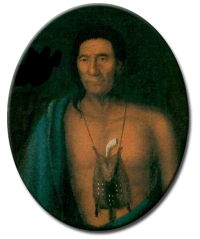
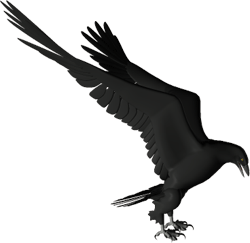
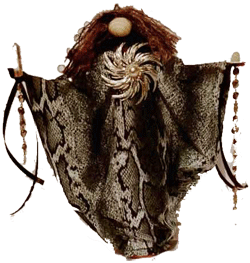

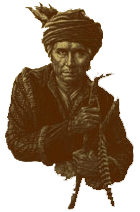
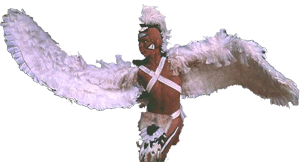
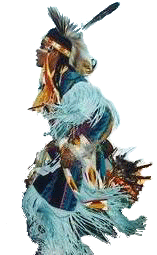
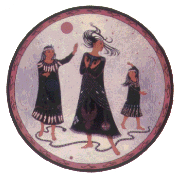
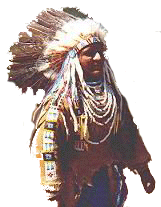
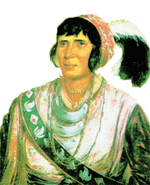
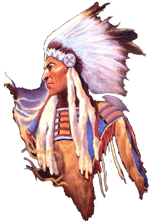
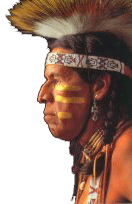
Δεν υπάρχουν σχόλια:
Δημοσίευση σχολίου